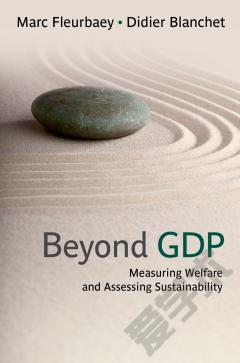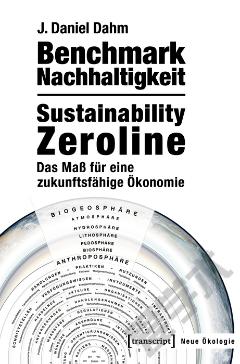Beyond GDP —— Measuring Welfare and Assessing Sustainability
----- 超越GDP:测量福利及可持续性评估
Contents vii Preface ix Introduction: The four musketeers xi 1 A wealth of indicators 1 1.1 Introduction 1.2 A bird's eye view 1.3 Aggregating the non-aggregatable? 1.4 Correcting GDP 1.5 Sustainability assessment: weak or strong? 1.6 Coping with multidimensionality: dashboards 1.7 An overhanging question: how far can aggregation go? 2 Measuring sustainability 2.1 Introduction 2.2 Wealth and sustainable well-being 2.2.1 Discounting future streams of well-being? 2.2.2 From intertemporal well-being to sustainable consumption 2.3 The savings approach: a reference framework 2.3.1 Shifting the focus to sustainability : why? 2.3.2 Assessing sustainability in imperfect but predictable economies. 2.3.3 An example 2.4 The savings approach: several pending problems 2.4.1 Monetization in practice 2.4.2 Behavioral indeterminacy or when 'weak' indicators can turn out too strong 2.4.3 Technological and normative uncertainties 2.4.4 An additional problem: the cross-national dimension of unsustainability 2.5 Conclusion: where to go from there? iii iv CONTENTS 3 A price for everything? 3.1 A revealed preference argument 3.1.1 The argument for an individual consumer 3.1.2 Extending the argument to social welfare through a representative agent 3.1.3 Extending the argument to social welfare with an opti- mality assumption 3.2 A variant of the revealed preference argument 3.3 The theory of index numbers 3.3.1 An axiomatic approach 3.3.2 Approximating welfare changes 3.4 Decomposing welfare 3.4.1 A first decomposition, with the social expenditure function 3.4.2 A second decomposition, in terms of effeciency and equity 3.4.3 A new decomposition, based on Bergson curves 3.4.4 Another decomposition, for small variations 3.5 Specific problems with imputed prices and full income 3.6 Conclusion 4 Equivalent income, or how to value what has no price 4.1 Money-metric utility and equivalent income 4.2 Knock-out criticism? 4.2.1 Not welfarist enough 4.2.2 Too welfarist 4.2.3 Potentially regressive 4.2.4 Reference dependent 4.2.5 Arrow's coup de grace 4.3 Fairness to the rescue 4.3.1 The equivalence approach in fair allocation theory 4.3.2 Arrow Independence is not compelling 4.3.3 References need not be arbitrary 4.3.4 The right dose of welfarism 4.3.5 Bundle dominance is unacceptable 4.3.6 Egalitarianism is demanding 4.4 Social welfare decomposition 4.5 Conclusion 5 Is happiness all that matters? 5.1 The Easterlin paradox: Have we been wrong for 70,000 years? 5.1.1 Bentham is back 5.1.2 The debate about subjective welfarism 5.1.3 Is happiness the ultimate goal? 5.1.4 The key objection to subjective scores 5.2 A theory of subjective well-being 5.2.1 A[currency]ects and judgments 5.2.2 The three problems of the respondent CONTENTS v 5.2.3 Heterogeneous and shifting standards 5.2.4 What do people care about? 5.2.5 Comparisons across preferences 5.3 Making use of happiness data 5.3.1 Proposed indicators 5.3.2 Putting a[currency]ects in their place 5.3.3 Identi?cation problems 5.3.4 Can happiness data be improved? 5.4 Conclusion 6 Empowering capabilities 6.1 The capability approach 6.1.1 From basic needs to capabilities 6.1.2 Functionings, between 'opulence' and 'utility' 6.1.3 From functionings to capabilities 6.2 Capabilities as opportunities 6.2.1 Valuing sets 6.2.2 The relevant aspects of opportunities 6.2.3 Shaping opportunity sets 6.2.4 Equality against set valuation 6.2.5 Why capabilities? 6.3 The valuation issue 6.3.1 The intersection approach 6.3.2 Disagreement and respect for diversity 6.3.3 Implications of respect for personal preferences 6.4 Is the CA a separate approach? Conclusion: How to converge on a multiplicity Why synthetic indicators? Shortcuts and pitfalls Vices and virtues of monetary indicators A multiplicity of synthetic indicators Sustainability warnings A A theory of the reference for equivalent incomes A.1 The model A.2 Reference operators A.3 Non-market goods A.4 Market prices A.5 The household problem B Proofs 233 B.1 A Paretian rank-dependent criterion B.2 Reference-price independence B.3 A simple proof of Arrow's theorem in an economic framework vi CONTENTS Bibliography
{{comment.content}}








 京公网安备 11010802027623号
京公网安备 11010802027623号